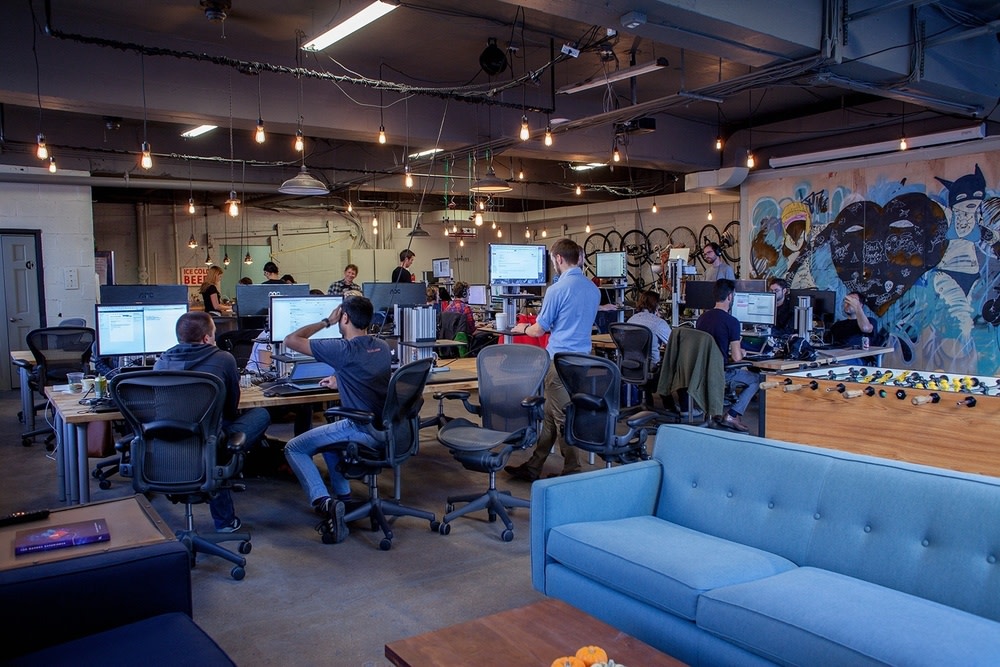Mapbox is a mapping platform for developers — its building blocks integrate location into any mobile or online application, changing the way people move around cities and understand our planet.
From finding a coffee spot on Foursquare, to visualizing business data in IBM Cognos, to exploring your next vacation spot with Lonely Planet — Mapbox does the geo work so developers can focus on building their apps.
An open source ethos, built on GitHub
Mapbox’s team builds their product with open source parts and releases as much code as possible. Their reasoning? It’s the right thing for people, technology, and business. In addition to a strong commitment to open source, Mapbox also works on GitHub; every employee, from Legal to Engineering to Finance, is an active contributor to its 1,200+ repositories.
From our open source tech, to how we run events, it’s all managed and built on GitHub, said Lindsay Young, from Mapbox. GitHub is so ingrained in the workflow at Mapbox that employees have personal repositories for organizing their lives—and two people have even planned weddings using GitHub repositories.
With offices in Washington DC, San Francisco, Peru, India, and Germany, the ability to collaborate and utilize asynchronous communication is essential. Mapbox is an open source company, and we operate like one. We use GitHub to organize our growing team and work together in five offices across six time zones, Lindsay explained. Right now we have more than 600 public repositories on GitHub, most licensed under Berkeley Software Distribution (BSD). We have an autonomous and flat workspace.
Transparency helps us vet the best ideas no matter where they come from. GitHub helps us scale that.
Working towards seamless, more effective collaboration
However, GitHub wasn’t Mapbox’s first attempt at fostering cross-organizational communication. We built our own open source intranet called Open Atrium (OA), Lindsay mentioned. This was actually the first software project we used Git for, and eventually moved it to GitHub for hosting. We started to prefer communicating on GitHub about OA development, rather than use OA for our own communications.
The company reached a turning point when establishing a repository for the internal Mapbox blog. We had a foot in both camps for a long time but finally someone on our team created a repository called /hey to be our internal blog (we posted issues instead of blog posts). The move to include non-code based communications on GitHub kicked off the full switch for our team.

Integrations help the Mapbox team build better workflows
The familiar open source workflow allows Mapbox employees to operate seamlessly. Lindsay cites cross-issue linking as a major part of this success. This is how we link technical and non-technical issues across all repositories, she explained. Whether we are tracking an opportunity with a customer in the sales repository, collaborating on the technical implementation of features that will help win the opportunity across various code repositories, or booking a sprint to work together on implementation in the travel repository, all issues can be linked.
Integrations are also making life at Mapbox a little easier. Companies are scaling by building OS tools to fit particular workflows, but it’s easier to build it and integrate ourselves, Lindsay said. For example, the Mapbox communications team was having trouble getting timely posts for the blog. The solution? A CLI integration that automatically pulls content from issues into a Slack channel, freeing up the communications team from having to relentlessly track down content. It helps us keep track of what’s moving, helps wrangle people and let them know who’s on call, scales the team across time zones, and we didn’t have to change the ticket format.
The move to include non-code based communications on GitHub kicked off the full switch for our team.
Because Mapbox and GitHub share the foundational values of collaboration, transparency, and communication, the benefits of complementary systems are plain to see. Once you get the workflow down you’re never going to want to work anywhere else, Lindsay said.

